

William Stopford
The cars axed in 2025 that we'll miss the most
19 Hours Ago
It’s not just the budget-minded buyer who should taking a close look at the new Lexus ES, it’s anyone who values first-class comfort.

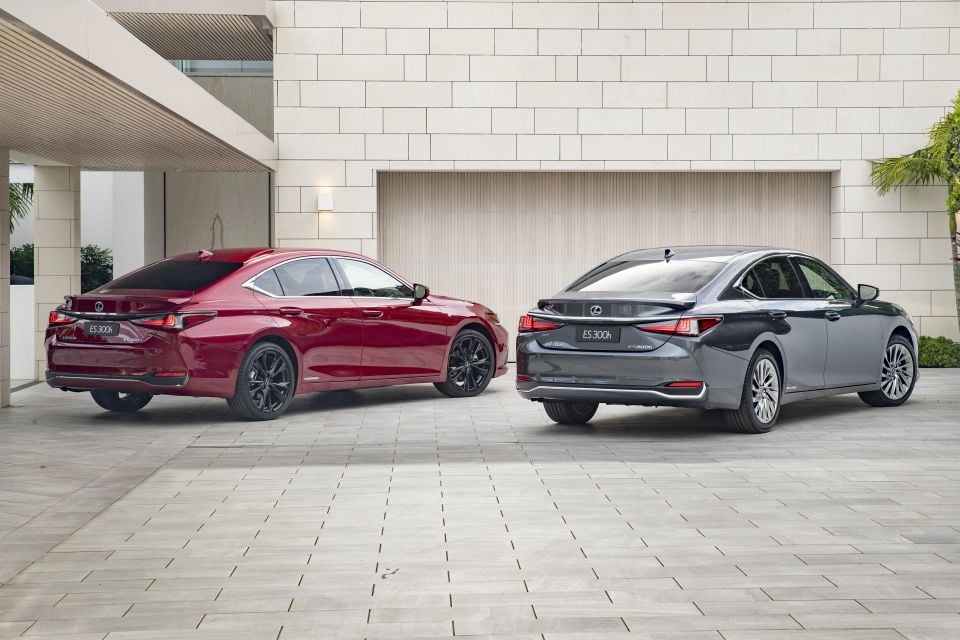

Senior Road Tester
New from
$62,525
excl. on-roads

Senior Road Tester
New from
$62,525
excl. on-roads


Senior Road Tester
New from
$62,525
excl. on-roads

Senior Road Tester
New from
$62,525
excl. on-roads
Quickly see how this car stacks up against its competition. Select any benchmark to see more details.
Where expert car reviews meet expert car buying – CarExpert gives you trusted advice, personalised service and real savings on your next new car.
Sedans like the 2022 Lexus ES may not always appear on your prestige radar given our obsession with SUVs, but this facelifted version has gone under the microscope to improve its dynamic competency and dial in more refinement.
At Lexus, the mid-sized ES is a core nameplate, given it was one of the very first models to be sold globally along with the marque’s flagship sedan (the game-changing LS400) when the marque was founded in 1989.
Sales-wise it’s been a huge success story despite the ongoing popularity of SUVs, with the ES still making up a quarter of Lexus sales in 2020. In 2021, the seventh-generation luxury medium sedan is on track for a further 20.3 per cent increase in units sold.

Not bad, given most mid-sized sedans are in a catastrophic nosedive and showing little chance of recovery in the foreseeable future, unless the advent of electric vehicles somehow changes the buying dynamic.
Lexus expects around 85 per cent of ES buyers to choose the frugal hybrid-electric ES300h (in five grades) thanks to fuel economy, but the facelift also brings a new entry-level ES250 (in three grades) from $61,620 before on-roads. The least expensive ES300h starts from $63,500.
Don’t think about the ES250 in cost-saving terms alone. Even though it’s down 8kW in power without the extra poke from the hybrid system, it’s 60kg lighter with its naturally-aspirated A25A-FKS petrol engine. Better for agility and steering response, they tell us.
Moreover, Lexus says it has honed the Global Architecture-K (GA-K) platform underpinning the new ES and upcoming new NX mid-sized SUV for similar levels of body rigidity to the GA-L platform that debuted in the superb Lexus LC sports coupe.
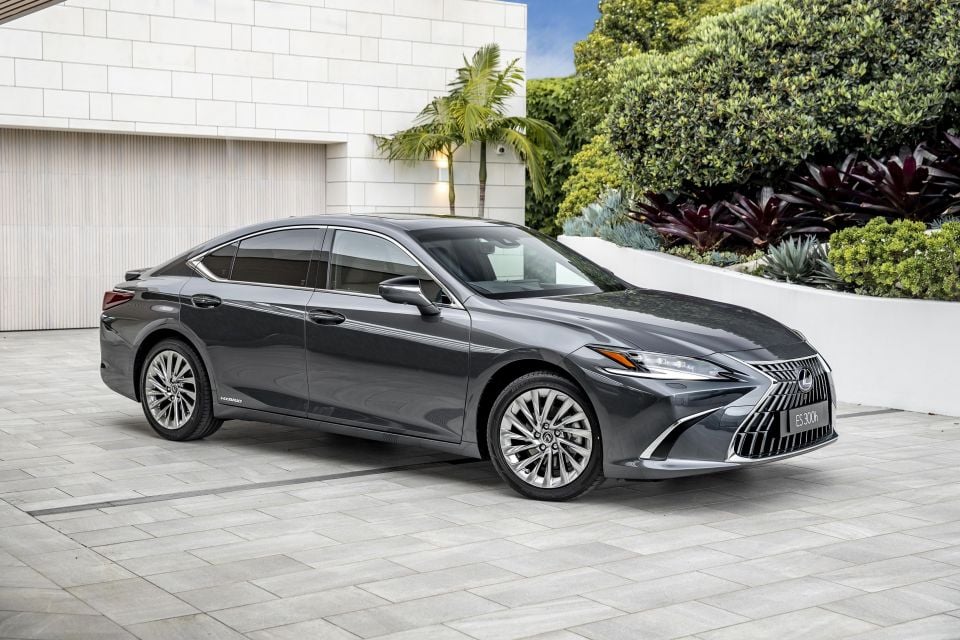
Better still, the ES switches from single-sheet structure for the rear suspension to a double-sheet design. There’s also more bracing across the double-wishbone rear suspension and front suspension tower/apron for better ride comfort, refinement, and handling.
Even the inside of the wheels on the new ES have been tweaked to further reduce road noise. That’s the level of detail that’s gone into this facelift by the Takumi master craftsmen that work on Lexus cars exclusively in Japan.
There are also a few aesthetic changes on the outside of the ES. Depending on the grade, the trademark Lexus spindle grille has been redesigned for a more technical look and there’s a new headlamp treatment which includes tri-beam LEDs with square bezels.
Inside, it boasts some new trim options including an eco-friendly bamboo, and the new 12.3-inch touchscreen display has been moved forward so it’s easier to access the various infotainment functions rather than deal with the infamous Lexus touchpad, which rather ludicrously remains.
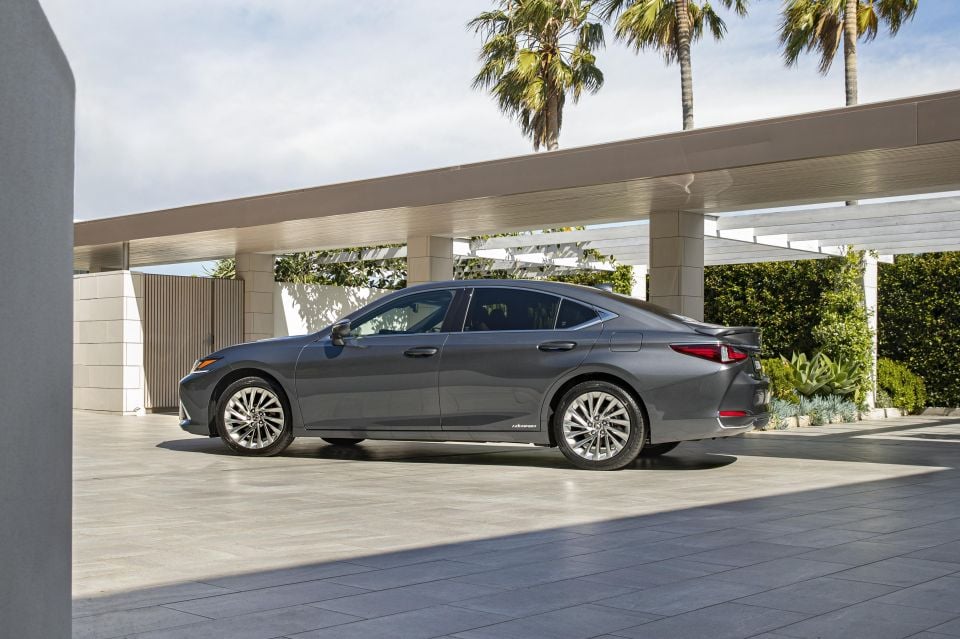
Lexus offered only its hybrid-electric powertrain with the ES before this update, with a starting price of $62,525 before on-roads for the entry-level Luxury. Now, the range kicks off with the naturally-aspirated ES250 Luxury from $61,620 before on-road costs, saving you $905 in the process.
Sure, it’s a cheaper entry price but you’re going to use more fuel with less power.
Enhancement packs are also offered with Luxury and F Sport grades across both new ES variants, giving the ES250 Luxury with Enhancement Pack a price of $63,120 before on-roads.
Next up is the entry ES300h Luxury from $63,550, while the ES300h with Enhancement Pack is yours for $71,810. It’s a significant premium, though the extra trim and upholstery choices are interesting, as are the extra creature comforts.
Slotting between the two is the ES250 F Sport from $70,860, where the entry F Sport with the hybrid powertrain starts at $72,930. The ES300h F Sport with Enhancement Pack is priced at $76,530, while the top-spec ES300h Sports Luxury wears a $78,180 sticker.
All prices exclude on-road costs.

Buy your new car without the stress. It's fast, simple and completely free.

Great service from Travis and team, second time I have used this business would not hesitate to recommend them to anyone
Craig C.
Purchased a Ford Ranger in Sunshine Coast, QLD
CarExpert helped Craig save thousands on his Ford Ranger, now let us save you on your next new car.
Find a dealThere’s one thing you can count on when buying a Lexus (any Lexus) is that you’re purchasing a fully-loaded car without the need to spend up big on optional extras.
It’s been that way from day one, so we’re a bit surprised with the additional enhancement packs now available. Then again, the way Lexus has packaged the packages they’re more like another grade.
ES250 Luxury highlights:
ES250 with Enhancement Pack adds:
ES300h Luxury adds:

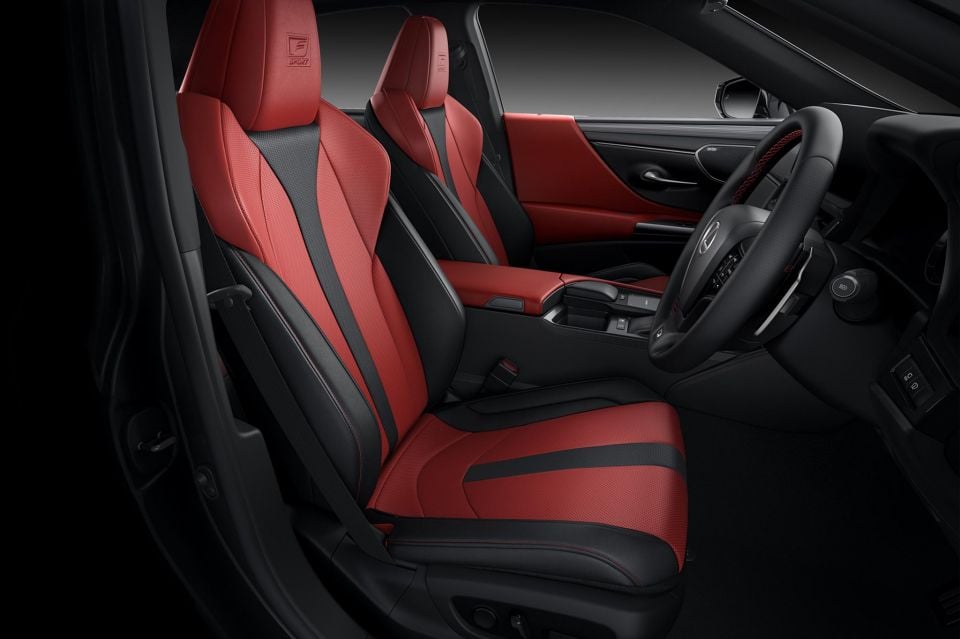
ES300h Luxury with Enhancement Pack gains:
ES250 F Sport features (in addition to ES250 Luxury):
ES300h F Sport adds:
ES300h F Sport with Enhancement Pack gains:
ES300h Sports Luxury features (over ES300h with Enhancement Pack):
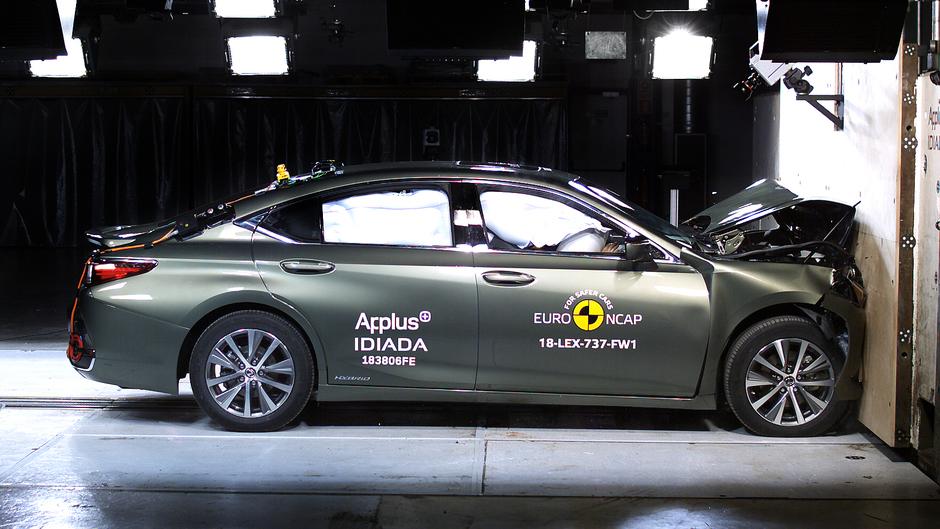
The Lexus ES wears a five-star ANCAP safety rating based on crash testing conducted in 2018.
It scored 91 per cent for adult occupant protection, 86 per cent for child occupants, an impressive 90 per cent for vulnerable road users and 76 per cent for safety assist.
Dual frontal airbags, driver and passenger knee airbags, front and rear chest-protecting side airbags and head-protecting side airbags (curtains) are standard equipment.
The 2022 ES debuts a new turning assist system, which will apply the brakes if you’re about to cause an accident by turning across traffic, and a steering assist system.
Standard safety equipment also includes:
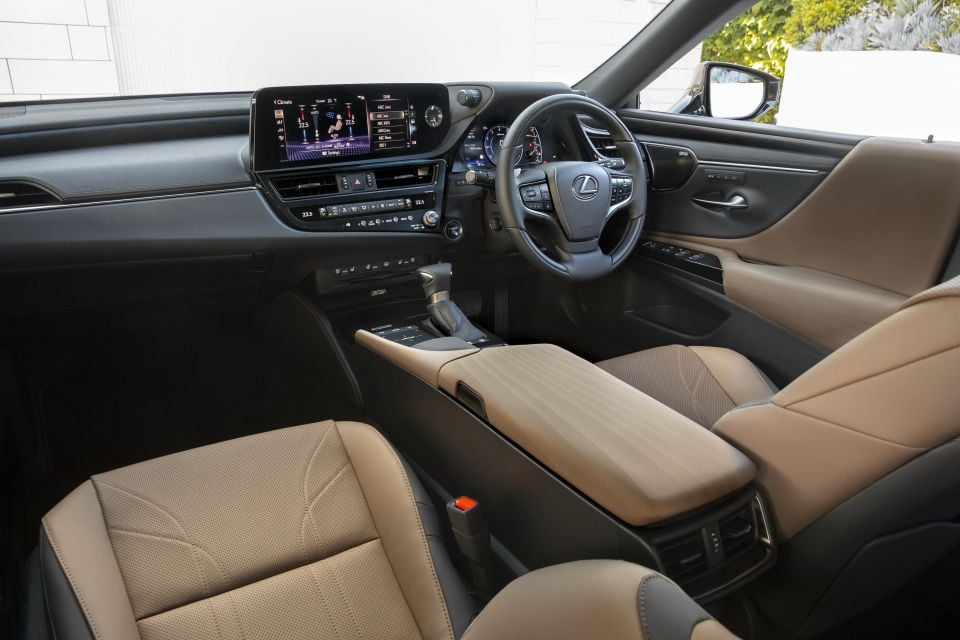
Due to an abbreviated launch programme we only got to sample the ES300h in the top-spec Sports Luxury and F Sport with Enhancement Pack grades, but stay tuned for a full review of the ES250 once we get more time with one.
If you haven’t looked inside an entry-level Lexus in a while, you’re going to be treated to luxury of the likes of which you would normally see in vehicles costing well over $100,000.
It’s led by acres of the softest upholstery and some of the most comfortable seats in the luxury business, complete with contours that make it easy to slide in and out of even when wearing a jacket. It seems the entire cockpit is soft-touch, where most cars in this segment use hard plastics below the eyeline.
It looks and feels like you’re in the flagship Lexus LS limousine rather than a base model.
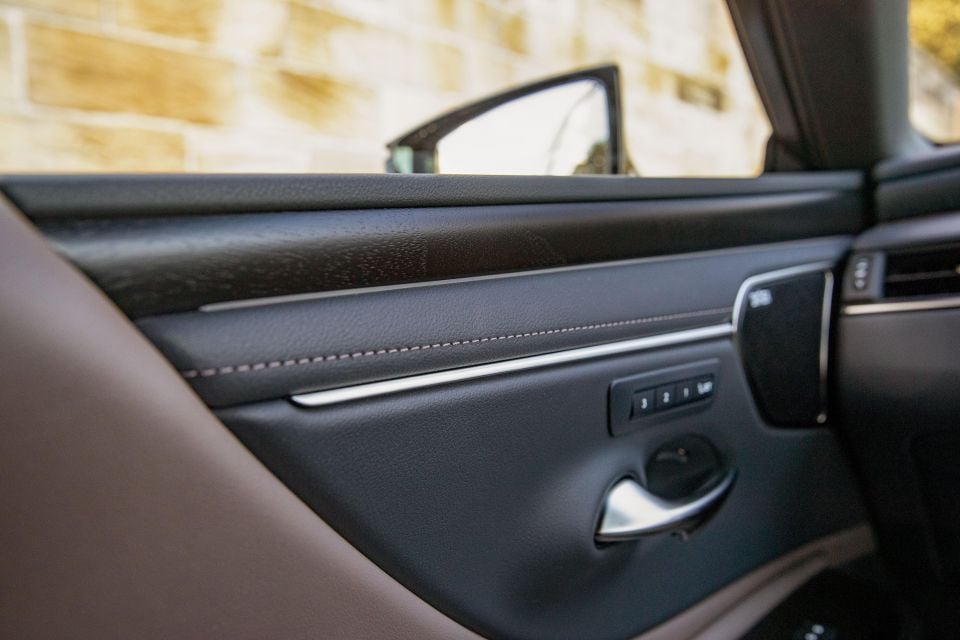
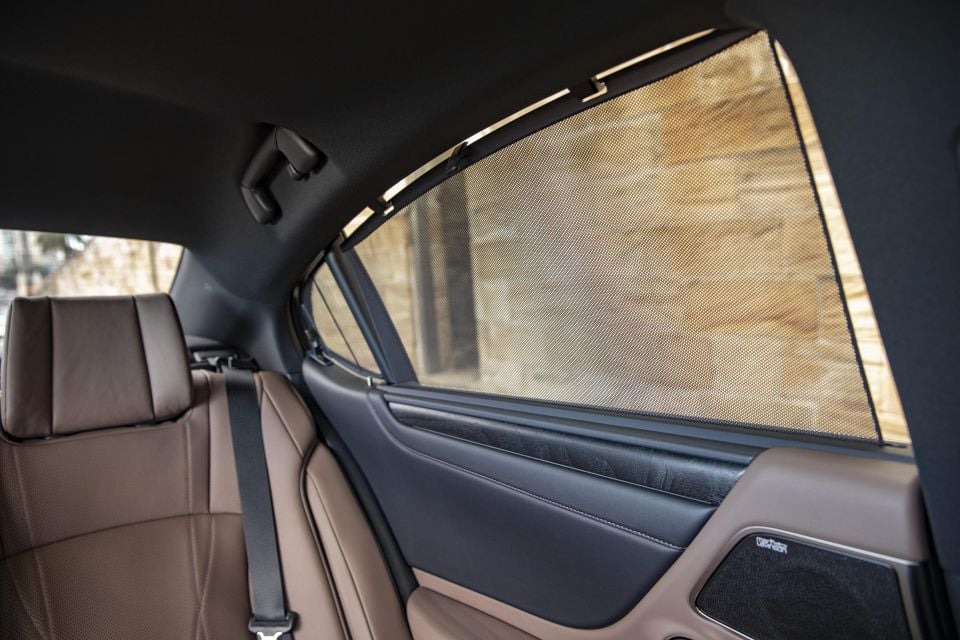
If you’re looking to cut your carbon footprint by choosing the ES300h, you’ll likely want the genuine Bamboo trim with Black upholstery. F-Sport grades get the Haldori aluminium ornamentation, a polished finish ‘inspired by the Japanese art of sword-making for depth and texture’.
It’s the perfect accompaniment to the two-tone upholstery with quilted stitching and embossed headrests
Not only does the flagship-grade Sports Luxury include swathes of super-soft semi-aniline leather trim, it gets power-adjustable reclining rear seats, complete with a centre armrest that allows passengers to control everything from the rear sun blind, seat-heating and angle, to the audio and tri-zone climate control.
The new touchscreen infotainment display is a blessing, though the frightfully fiddly trackpad system remains, presumably to make it easier to access functions on the run. The analogue clock on the right-hand side is a nice touch, as are the two beautifully fashioned instrument stalks that pop out above the driver’s display.
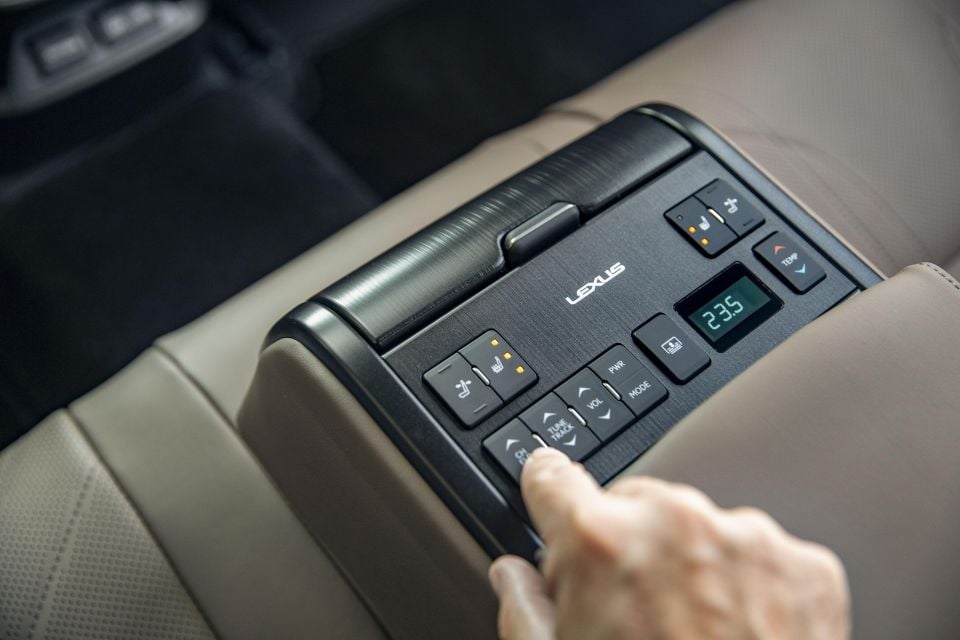
However, I found the interface (especially when accessing the satellite navigation) to be a little confusing when trying to input a new destination, although response is quick.
The 8.0-inch driver’s display isn’t large by today’s standards, but the information is crystal clear and we like the centre binnacle for its nod to the Lexus LFA supercar.
Stretching nearly five-metres in length (4975mm to be exact) there’s no shortage of passenger space in either seat row.
Rear-seat room alone should make the ES300h a hire-car favourite amongst operators and passengers alike, while boot capacity is 454 litres with a wide aperture for easy loading of suitcases.
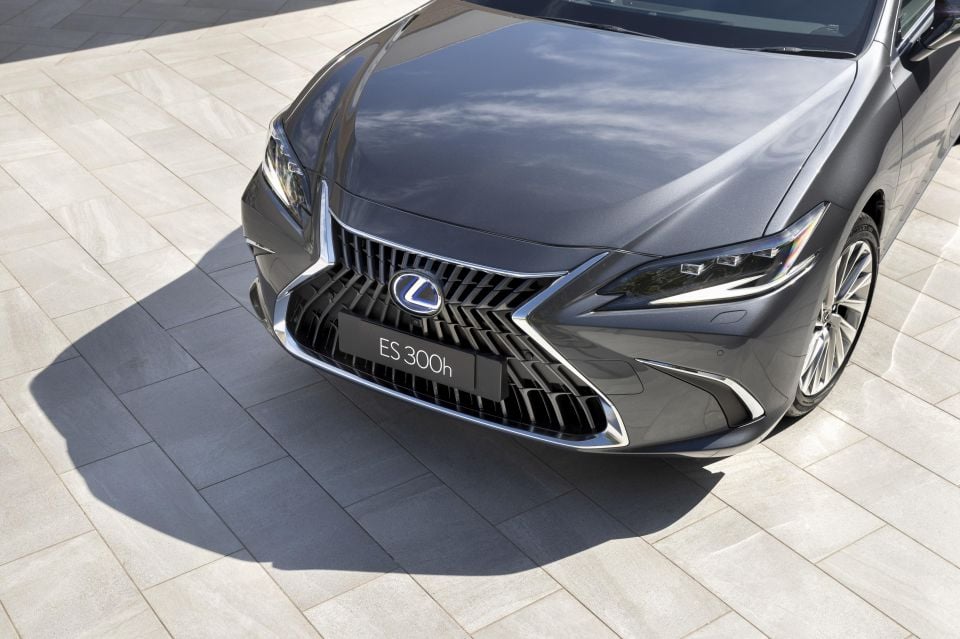
The Lexus ES300h is powered by a 2.5-litre hybrid system, with a combined power output of 160kW.
It blends power from a 2.5-litre four-cylinder petrol engine with 221Nm of torque and an electric motor with 202Nm of torque, but Lexus doesn’t quote a combined torque figure.
Drive is sent to the front wheels through an e-CVT automatic transmission.
The new Lexus ES250 is powered by a 2.5-litre naturally-aspirated four-cylinder petrol engine shared with the Toyota RAV4.
It develops 152kW of power and 243Nm of torque, sent to the front wheels through an eight-speed automatic transmission.
Lexus Australia claims the ES300h uses 4.8L/100km on the combined cycle, while the ES250 uses 6.6L/100km.
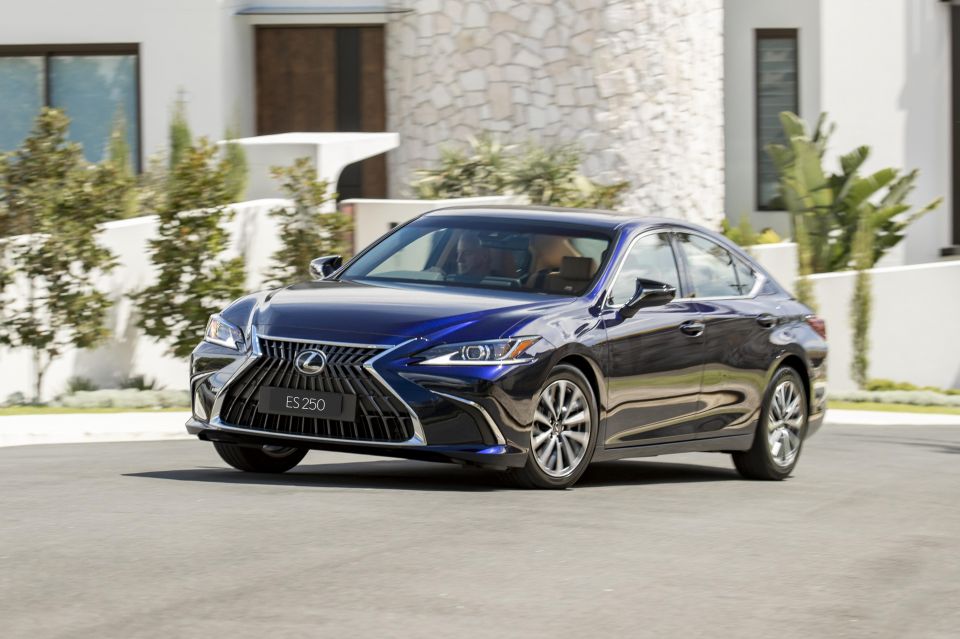
Only the ES300h was offered to journalists at the launch program, though the ES250 will be available to us shortly. Bear in mind, up to 85 per cent of ES sales are expected to be made up by the hybrid.
First up, we sampled the ES300h Sports Luxury and while the combination of a hybridised four-cylinder petrol engine mated to an e-CVT might not seem all that appealing given the car’s 1740kg kerb weight, it’s certainly not what I would call hamstrung when it comes to off-the-line acceleration or even mid-range pull for that matter.
In fact, you’ll likely enjoy the swift getaways from the traffic lights thanks to the extra torque punch from the hybrid powertrain, even in Normal mode. Outside of motorway travel I tended to drive the ES300h in Sport, which amps up the engine, steering, and transmission responses for a more satisfying drive.
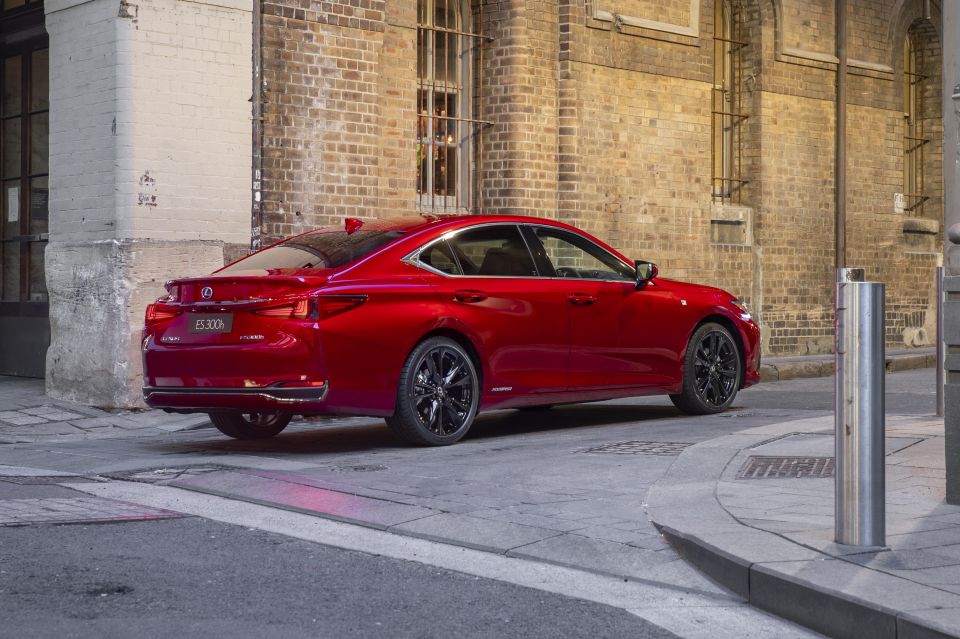
Where the new Lexus ES really comes into its own, is the high level of refinement it delivers with its four-cylinder powertrain. Even under sustained acceleration, noise levels inside the cabin are exceptionally low given its e-CVT transmission.
As far as CVT transmissions go, this is a good one for its quick response, linear power delivery, and limited rev flare, though not even Lexus can dial it out completely.
Deceleration is smooth thanks to a system called Auto Glide Control that limits brake regeneration when coasting to a stop. The brake pedal also feels slightly more linear on this facelifted model, the result of a revised master cylinder that reduces the free play in the pedal, while the booster has been adjusted to improve initial response and pedal feel.
Mind, it still feels overly sensitive on initial braking applications to me, but overall it’s more progressive.
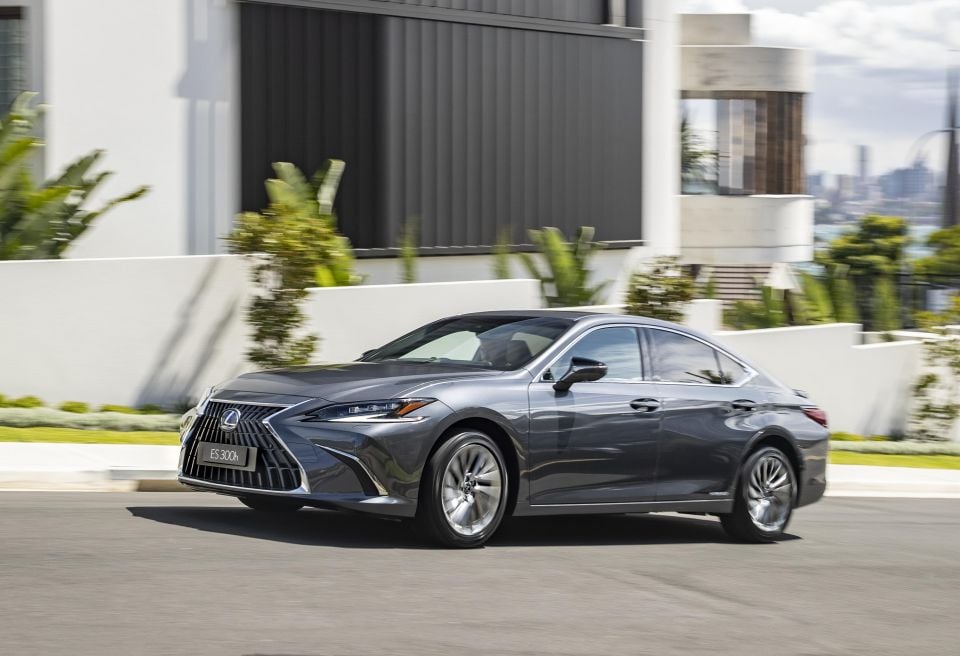
Where expert car reviews meet expert car buying – CarExpert gives you trusted advice, personalised service and real savings on your next new car.
Lexus has also beefed up body rigidity on the new ES by going from a single-sheet design to a double-sheet set-up for the rear suspension, as well as extra bracing up front. There isn’t much roll even tucking the car into some higher-speed bends on the old Pacific Highway, though we’d like more seat time in the car for more thorough findings.
It’s definitely a sharper-handling, more composed vehicle now, with a myriad of improvements to steering feel and turn-in response, ride comfort seems to be bit of a mixed bag.
The ES300h Sports Luxury misses out on Adaptive Variable Suspension of the F Sport grade for reasons I can’t fathom, instead relying on a fixed-rate setup with performance dampers and 18-inch wheels for ride comfort.
While larger bumps and broken roads are absorbed, the sharper edges are felt through the chassis, at least on the secondary hit. I expected a more rounded approach to the damping in this top-grade variant. I can’t help but feel adaptive suspension would go a long way to improving overall ride comfort.

Our return journey was in the ES300h F Sport with Adaptive Variable Suspension and extra sporty drive modes.
Interestingly, the system only provides two levels of damping force – a normal mode, or Sport+. While there is more compliance in the softer mode and more composure in the latter, you can feel the secondary hit over those sharper bumps, but it feels more tied down through the bends.
More impressive is the complete lack of noise in the cabin. Let me put it this way; you can’t hear the electric motors when adjusting the driver’s seat – and that’s with the car’s off. I think the Rolls-Royce Ghost is the only other car that can boast such a thing.
Even when you’ve got the hybrid powertrain singing at full noise on an uphill climb, there’s very little intrusion into the cabin, and that’s by design – 93 per cent of the floor is covered with sound-deadening materials (up from 68), while the wheel arches get the treatment too.

Lexus offers a four-year, unlimited-kilometre warranty. That puts it a year behind Volvo, Jaguar Land Rover, and Mercedes-Benz in the warranty stakes, although Audi and BMW still lag behind with three years of coverage.
In terms of pricing, the ES will set you back $495 for each of those first three annual/15,000km visits (whichever comes first), equating to $1485 in total.
Lexus has also added an Ampol/Caltex 5.0c per litre fuel discount for premium unleaded, which is available as a permanent offer via the Lexus App.
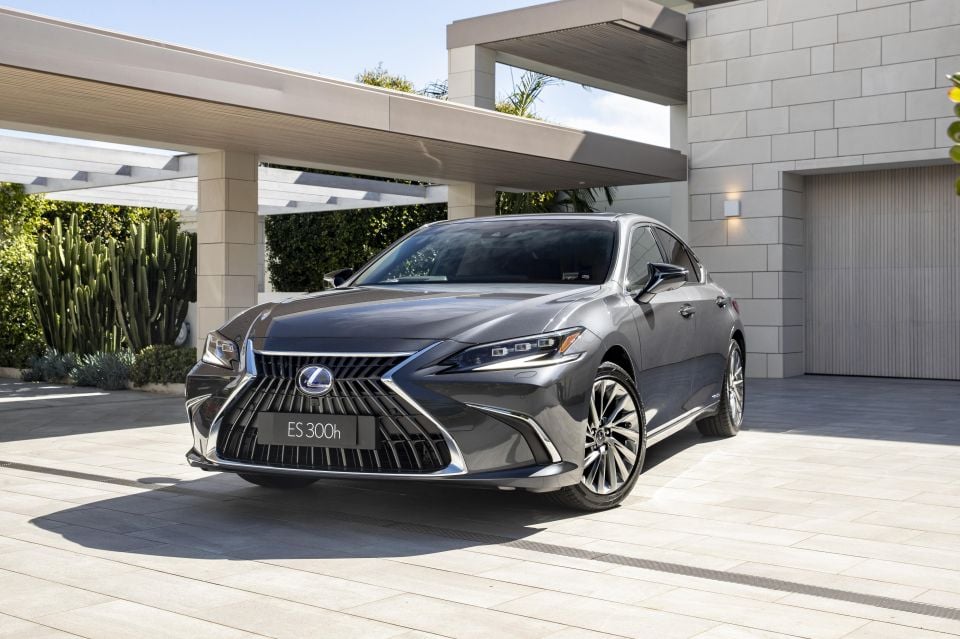
It’s not just the budget-minded luxury buyer that should take a close look at the new Lexus ES, it’s anyone who puts first-class comfort, refinement, and amenities ahead of rip-roaring speed and ultimate performance.
The latest Lexus ES is an attractive sedan that looks more expensive than prices suggest – and that’s before you climb aboard and get a taste of the sublime comfort with an endless list of options, some of which you’ll only find in cars costing north of $100,000.
It’s no firecracker, but it’s no slouch. If you choose the ES300h you’re likely going to save a few bucks at a time when fuel prices are through the roof.
Our only gripe is the mixed bag when it comes to ride comfort over sharp edges. We can’t help but think adaptive suspension with more breadth between Comfort and Sport would go a long way to smoothing out ride compliance across all ES grades and across all road surfaces, especially the secondary ride.
We’d like more time with the car for a more thorough assessment across a larger variety of roads and conditions. Also stay-tuned for a full review on the ES250 once it’s on the press fleet.
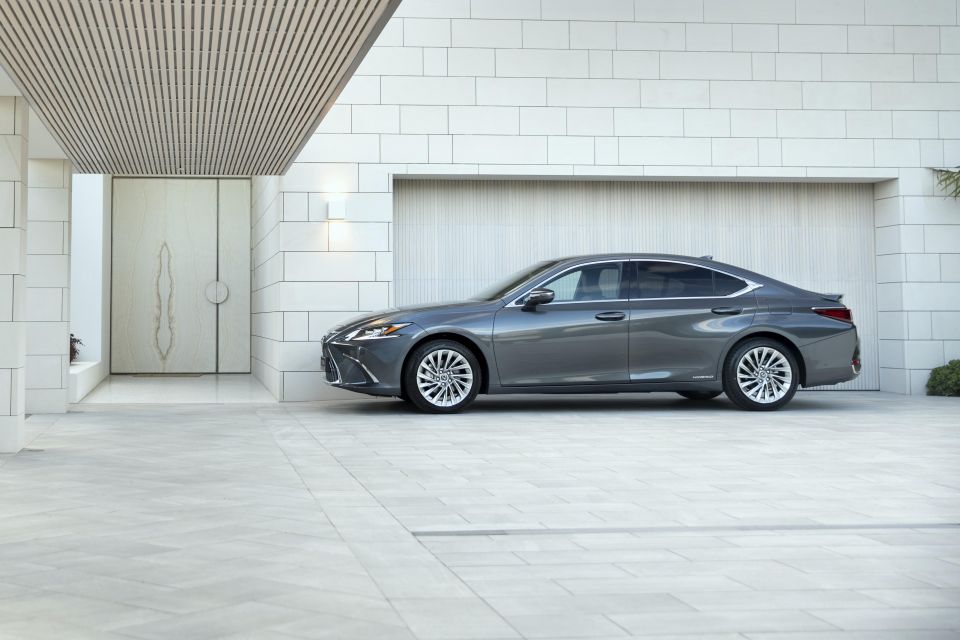
Click the images for the full gallery
MORE: Everything Lexus ES
Where expert car reviews meet expert car buying – CarExpert gives you trusted advice, personalised service and real savings on your next new car.
Anthony Crawford is a CarExpert co-founder and senior presenter with 20+years in automotive journalism and content creation.


William Stopford
19 Hours Ago


William Stopford
2 Days Ago


CarExpert.com.au
5 Days Ago


Damion Smy
7 Days Ago


Damion Smy
10 Days Ago
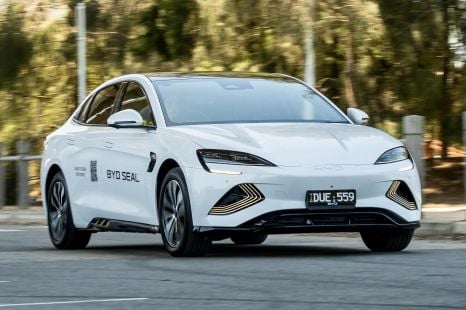

Max Davies
14 Days Ago